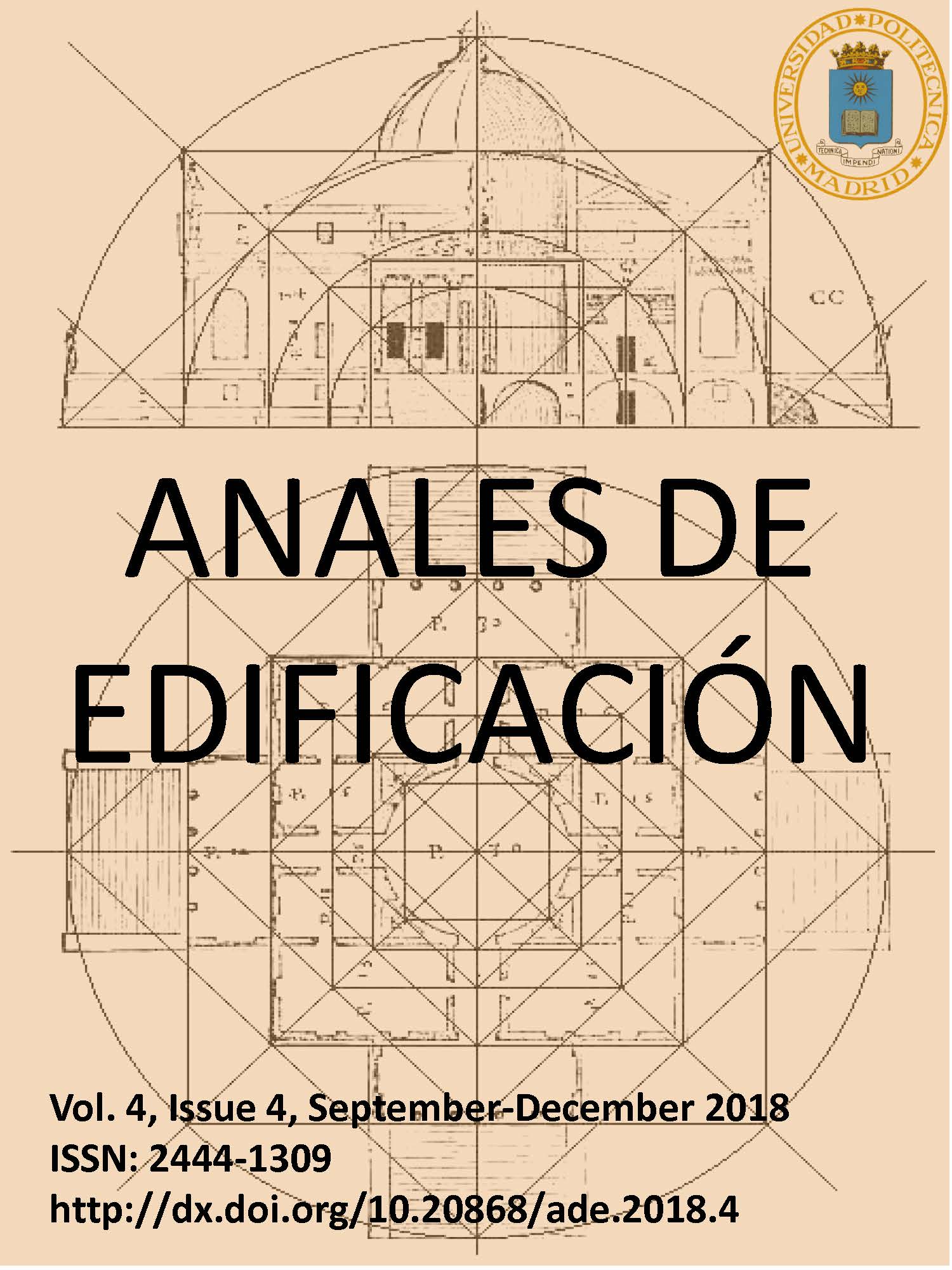Vocabulario para aparejos-3D (sistemas de construcción con componentes-3D) = 3D-bonding vocabulary (building systems with 3D-components)
DOI:
https://doi.org/10.20868/ade.2018.3852Keywords:
Aparejo, cadena de montaje, componente industrial, unidad 3D, 3D-wagen, 3D-cápsula, Bond, assembly line, industrial component, 3D- unit, 3D- wagen, 3D- podAbstract
Resumen
La producción de componentes-3D para la construcción industrializada ha ido en aumento en los últimos 20 años de manera constante y paulatina. Su presencia se tiene en cuenta tanto desde la producción industrial, como desde la enseñanza de la Arquitectura, pero casi siempre desde distintos puntos de vista e intereses. La industria suele valorar solo el factor económico en todo lo que produce sin atender completamente a otros requerimientos como la calidad espacial o el aspecto simbólico, etc. Y la Universidad plantea tanteos y experimentos creativos que, sin dejar de tener su interés, se alejan de unos procedimientos y metodologías capaces de ser asimilados por la mayoría (como sí de hallazgos continuos se tratasen). El presente artículo trata de poner de acuerdo ambos campos atendiendo a un análisis y clasificación de casos de agrupación-composición de componentes-3D (aparejos-3D), de manera que una posible nomenclatura, y un reconocimiento de lo más utilizado, sirva para poner en común una tecnología que debería llegar a ser convencional, y ofrecer buenos resultados de Arquitectura siguiendo estas pautas automáticas.
Abstract
The use of 3D-components for industrialized construction has been steadily and gradually increasing during the last 20 years. It is present both in the industrialized production and the Architectural education, but almost always from different points of views and interests. From one hand, the industry values the economic factor in everything it produces without get to attend all spatial or symbolic values fully. And from the other hand, Universities’ projects often management exercises and experiments looking for a creative solution that are far away from procedures and methodologies be able assimilated for everybody (standard for industry). The present article tries to reunite both worlds (industrial and academic) from an analysis and classification of bonding cases. The most used procedures and the proposed names (operations designation) achive to link the conventional and standardized technology with correct spatial and compositional results.
Downloads
References
Bergdoll B., Christiensen P. (2008), Home delivery, NYC: MoMa 248 p.
Detail Monographs (2009). Systems & Components. Munich: Brikhaüser 240 p.
Kronengburg R. (2002). living in motion.Basilea: Vitra Museum.
Downloads
Published
Issue
Section
License
Anales de Edificación does not charge authors for processing or publishing an article and provides immediate Open Access to its content. All content is available free of charge to the user or his institution. Users are permitted to read, download, copy, distribute, print, search or link to the full text of articles, or use them for any other lawful purpose, without prior permission from the publisher or author. This is in accordance with the BOAI definition of open access.
- Authors retain the copyright and grant to the journal the right to a Creative Commons attribution / Non-Commercial / Non-Derivative 4.0 International (CC BY NC ND) License that allows others to share the work with an acknowledgement of authorship and non-commercial use.
- Authors may separately establish additional agreements for the non-exclusive distribution of the version of the work published in the journal (for example, placing it in an institutional repository or publishing it in a book).
Unless otherwise indicated, all contents of the electronic edition are distributed under a Creative Commons license.












